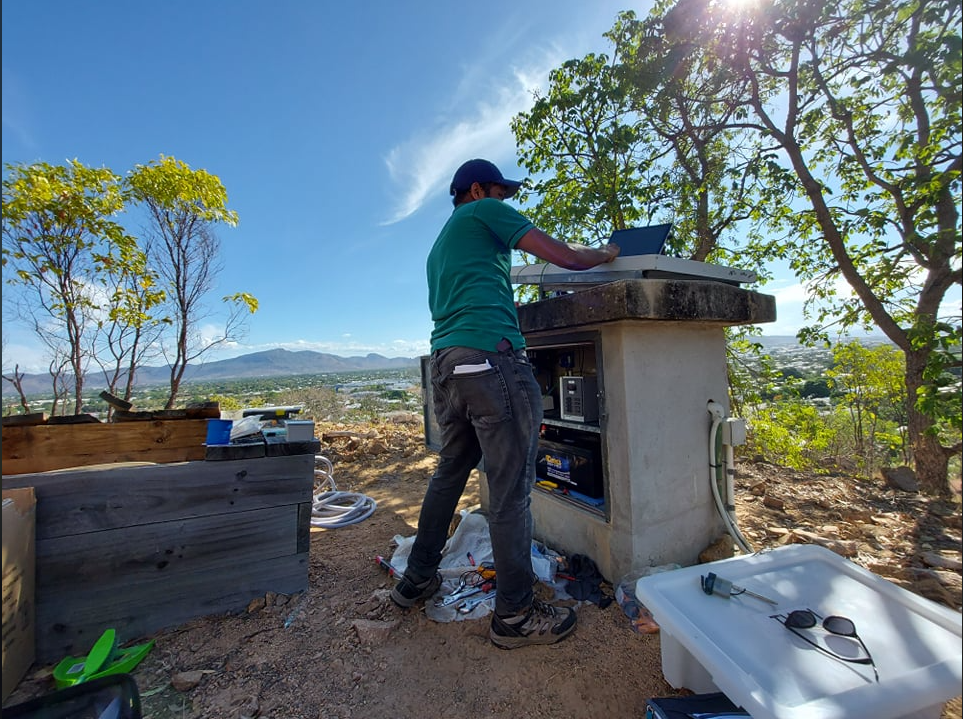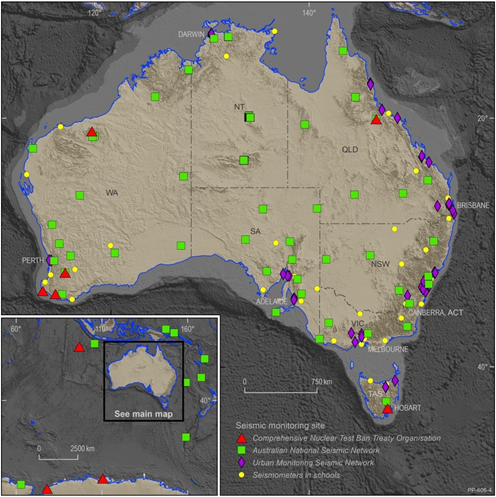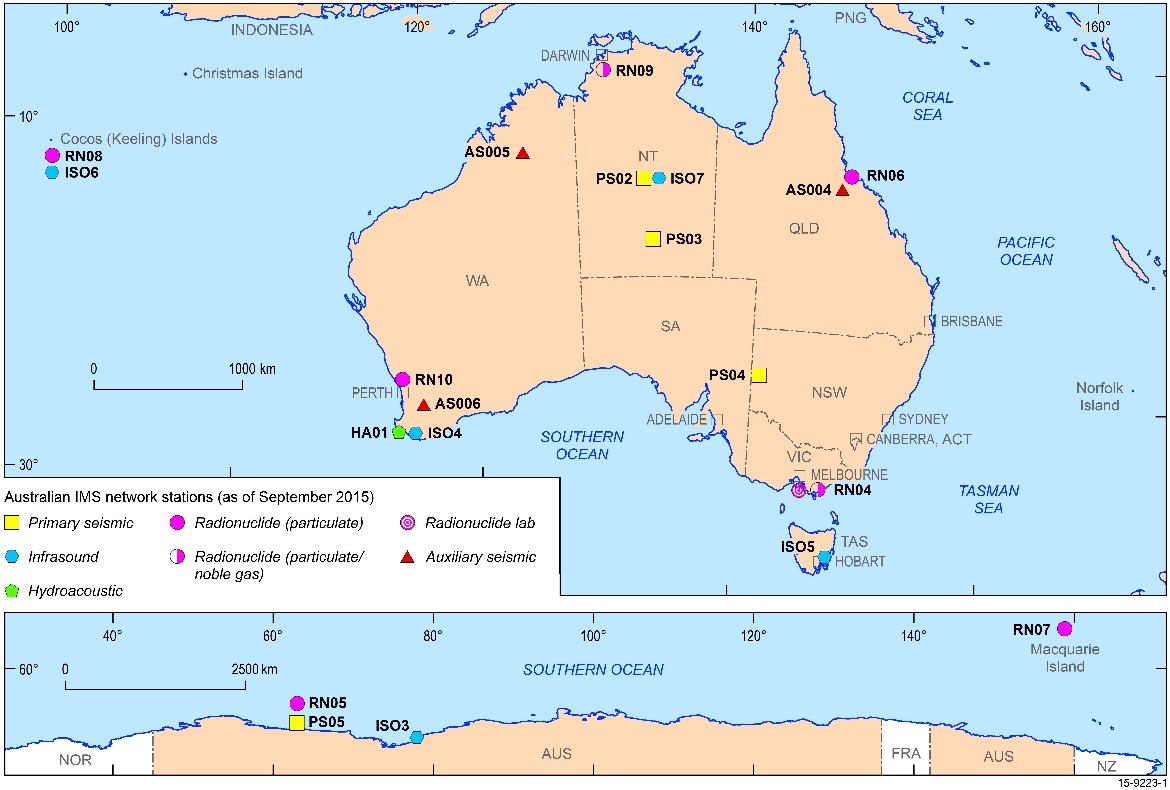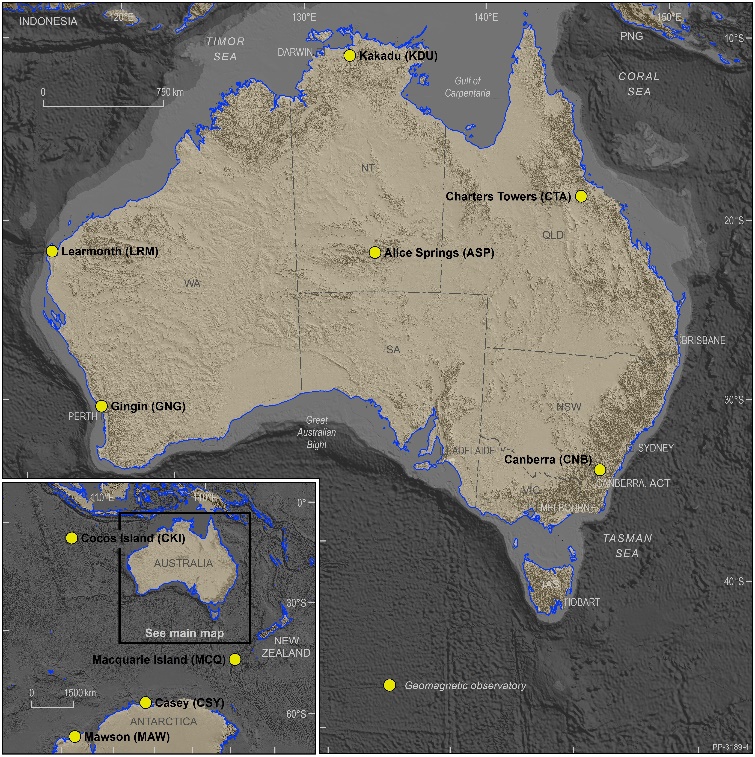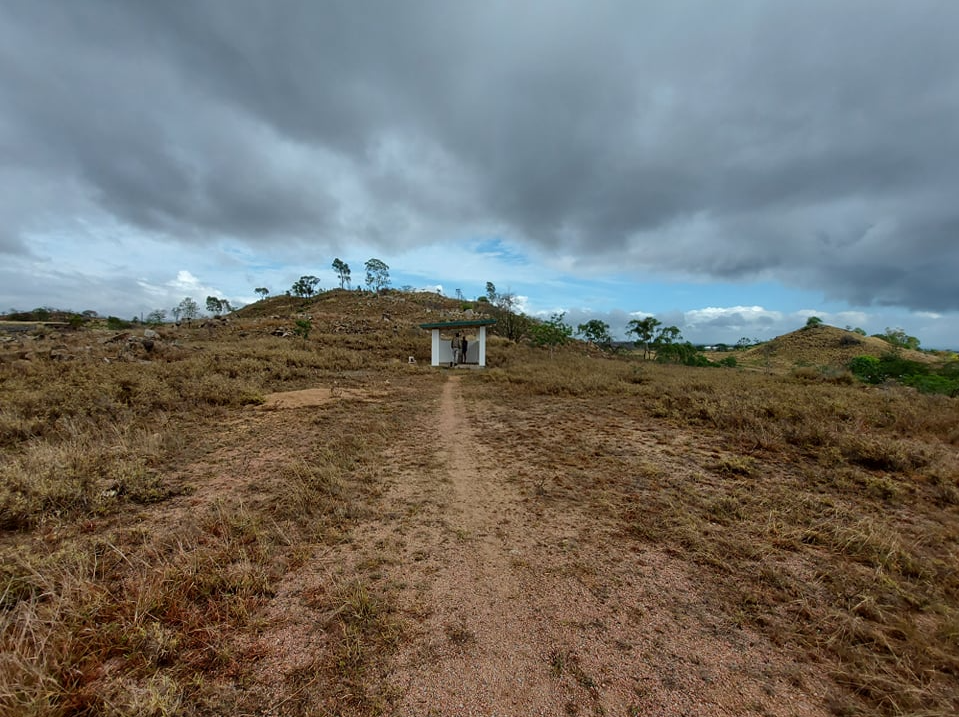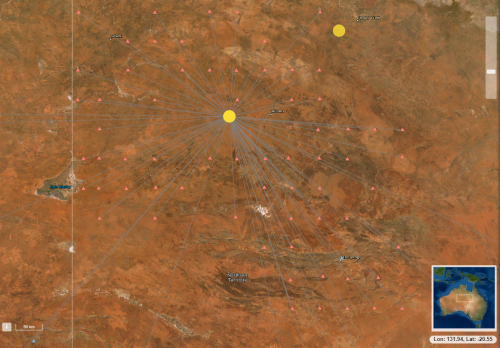Project Pioneering infrastructure networks to support Australia’s hazard and positioning data capabilities
How Geoscience Australia’s remote monitoring programs to provide scientific data to Australian and international stakeholders.
Page last updated:18 June 2024
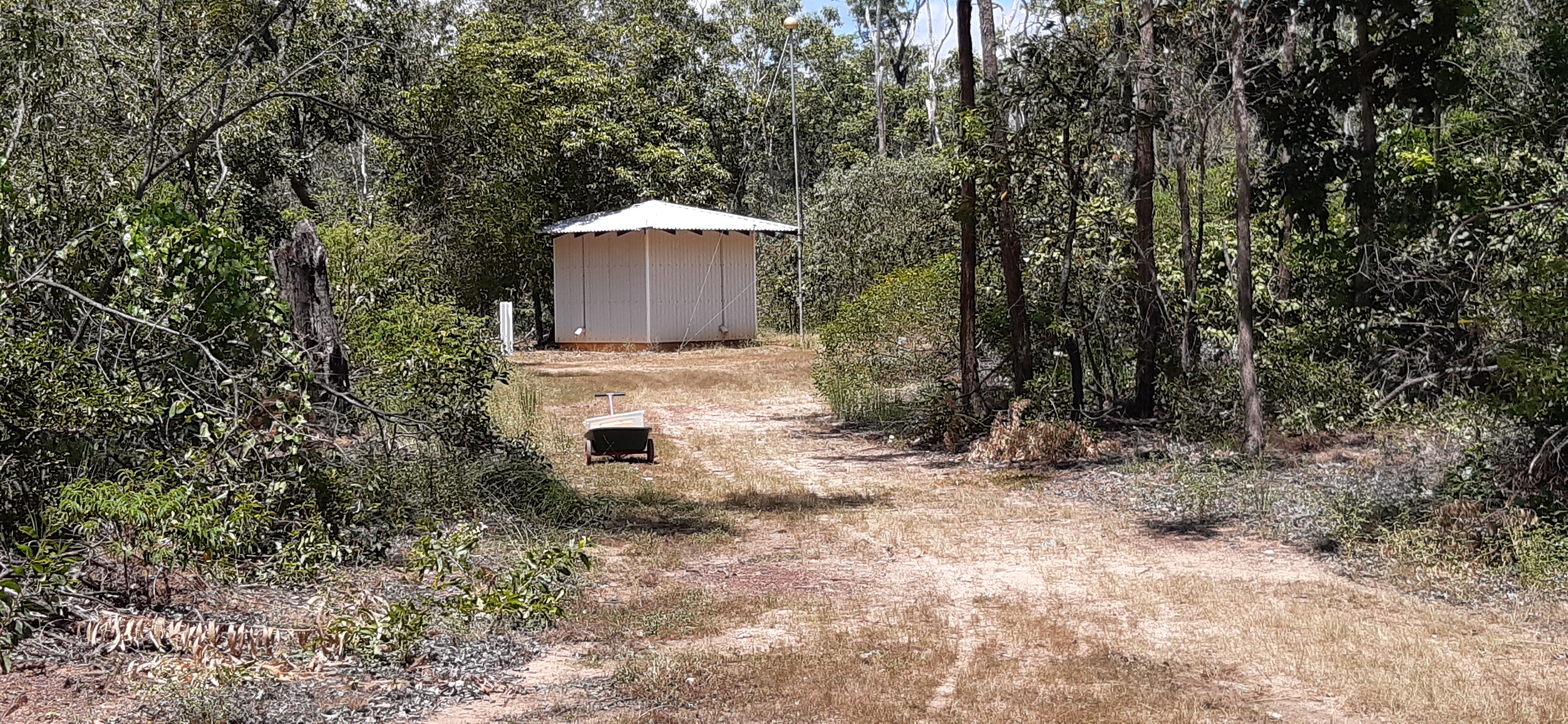
The problem
Maintaining varied infrastructure across a vast country
Geoscience Australia’s infrastructure network monitors natural and man-made hazards in Australia and around the globe. It delivers real-time geophysical data to stakeholders across Australia, in our Pacific region and throughout the rest of the world.
The expansive network undertakes a diverse range of services, including seismic monitoring, nuclear monitoring, geomagnetic monitoring and satellite Earth monitoring. Providing verified, authentic data across such a large geographical area, while running many different monitoring services, is an enormous feat. Maintaining the vast infrastructure network to support work is also time consuming, costly and logistically challenging.
What we’re doing
Operating monitoring infrastructure to keep Australia safe
Geoscience Australia installs, runs and maintains a high-tech network of stations, observatories and cutting-edge equipment for monitoring and reporting on earthquakes, tsunamis, potential nuclear tests and variations in the Earth’s magnetic field. As well as servicing Australia, the Australian Antarctic Territory, and Pacific, Southern and Indian Ocean islands, the networks also support larger international monitoring systems.
Our infrastructure forms the:
- Australian National Seismograph Network (ANSN)
- Australian component of the International Monitoring System for the Comprehensive Nuclear-Test-Ban Treaty Organization
- Australian Geomagnetic Observatory Network (AGON)
- Alice Springs Satellite Ground Station (ASSGS).
- Australian part of the Global Seismic Network (GSN)
Real-time and baseline data from these networks underpin our critical products and services such as the National Earthquake Alerts Centre (NEAC) and Digital Earth Australia Hotspots.
Information collected by these networks is regularly used by the Australian Department of Foreign Affairs and Trade, the scientific community, local, state and federal governments, emergency management teams and the insurance sector.
Australian National Seismograph Network (ANSN)
- We operate and maintain the ANSN – a network of over 100 seismic stations across Australia, islands in the Pacific, Southern and Indian Oceans, and the Australian Antarctic Territory.
- The seismic data collected by the ANSN is used for earthquake detection, measurement and location confirmation.
- In addition to permanent network installations, we run many short-term temporary installations, such as seismic activity monitoring in the Northern Territory’s Beetaloo Sub-basin region where shale and tight gas hydraulic fracking is occurring.
- The network also participates in aftershock monitoring. Following an earthquake, temporary teams with seismometers are rapidly deployed to areas near the earthquake epicentre to record details of any aftershocks. This data is used for earthquake characterisation and hazard assessment.
- ANSN data is particularly valuable in emergency response preparation, hazard modelling and risk mitigation. Specifically, ANSN data contributes to our National Seismic Hazard Assessment (NSHA) seismic hazard map, our National Earthquakes Alerts Centre (NEAC) and our online earthquake resource, Earthquakes@GA.
- Internationally, ANSN data is used by the US-based data hub, Incorporated Research Institutions for Seismology (IRIS) and distributed to tsunami warning agencies across the globe.
Comprehensive Nuclear-Test-Ban Treaty Organisation monitoring
- Part of the ANSN infrastructure is also used to meet Australia's international commitment to the Comprehensive Nuclear-Test-Ban Treaty Organization (CTBTO), which aims to ban all nuclear explosion tests and man-made hazards.
- We operate 11 nuclear monitoring facilities across Australia and the Australian Antarctic Territory, including 6 seismic stations (to monitor for underground explosions), 4 infrasound stations (to monitor for atmospheric explosions) and one hydroacoustic station (to monitor for underwater explosions).
- This infrastructure forms part of the CTBTO’s International Monitoring System and examines the Earth for evidence of nuclear explosions in all environments by analysing, integrating and comparing data across the IMS to determine the time, location and nature of possible nuclear events.
Australian Geomagnetic Observatory Network (AGON)
- Geoscience Australia maintains 10 geomagnetic observatories across Australia and the Australian Antarctic Territory as the AGON, which also forms part of a global observatory network.
- Data measured at these observatories show how the Earth's magnetic field changes in the Australian region. This is due to processes taking place beneath the Earth's surface, in the Earth’s upper atmosphere and in the Earth–Sun space environment.
- AGON real-time data is used to model the geomagnetic field, in resource exploration and exploitation and for scientific research. The resulting geomagnetic information is used for compass-based navigation, magnetic direction finding, and to help protect communities by mitigating the potential hazards caused by geomagnetic storms and other space weather.
Alice Springs Satellite Ground Station (ASSGS)
- Our Alice Springs Satellite Ground Station hosts 4 satellite ground station antennas – 2 antennas of 9 metres and 2 antennas of 2.4 metres – and associated infrastructure. The geographic location of ASSGS allows for satellite reception coverage over the entire Australian continent.
- Through the antennas, we collect satellite imagery of the Earth (Earth observations from space (EOS) data) from a number of Earth monitoring satellites. This environmental data detects changes in land use over time and is used by government, industry, education and research sectors, contributing billions of dollars to the Australian economy.
- ASSGS data informs our Digital Earth Australia Hotspots – a national bushfire monitoring system that provides emergency service managers and critical infrastructure providers with information about potential bushfire locations. It uses satellite sensors to detect areas producing high levels of infrared radiation.
- ASSGS connects with the Australian National Ground Segment Technical Team (ANGSTT) to collaborate and share knowledge with other Australian EOS stations and public sector infrastructure operators.
- The Alice Springs station is one of 3 in Australia which form the international US Geological Survey (USGS) Landsat satellite ground station network, which has been operating since 1979.
Geoscience Australia works with state and local governments and the emergency management industry sector across Australia to develop local hazard assessments. For more information, contact hazards@ga.gov.au
Looking forward
Leading the international scientific community
- All data recorded by observatories in our multiple infrastructure networks is freely available for all stakeholders to view and download online or via our official written records.
- We continue to set data quality benchmarks across all infrastructure networks, delivering the highest possible standard of data for users. A Quality Management System is used to verify the authenticity of all data and amend any incorrect calibrations. Data recorded at these stations is routinely checked for electrical and mechanical instrumentation malfunction issues, communication drop outs, and cultural and electronic noise interferences.
- Our earthquake data and research continues to inform Australians about reducing their risk from earthquakes and keeping their communities safe.
- Our geomagnetic monitoring program will continue to research geomagnetically induced currents and measure geomagnetic storms. Managing the impact of space weather and producing a clear geomagnetic hazard map will help communities make informed decisions about hazard risk, now and into the future.
How we can help you
Contact us to gain a better understanding of our infrastructure programs in your state, region or sector. The real-time and modelling data produced by our networks can help you develop targeted and effective hazard risk mitigation and risk reduction strategies for your community.
Our infrastructure resources can help identify your region’s high-threat areas so you can make better-informed planning and development decisions.
Email hazards@ga.gov.au
